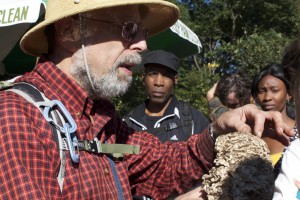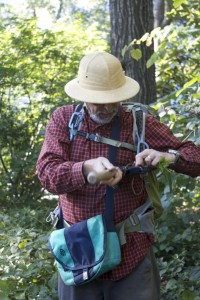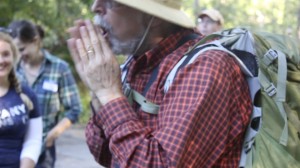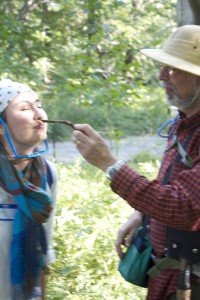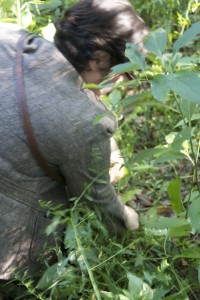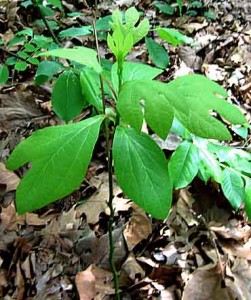
|
Foraging in Central Park – Part 1 Sunday I spent a couple hours foraging in central park with ‘wildman’ Steve Brill and a group of women and guests from the women’s culinary alliance. Steve has been leading foraging tours for the last thirty years. I have known about these tours for the last fifteen, so when the opportunity presented itself, I eagerly signed on. The day was bright and sunny and perfect for foraging. I thought – mistakenly it turns out – that we would come across at least a few varieties of wild mushrooms. We did not encounter a single mushroom, since they tend to pop out of the earth after a good rain. One woman had brought along a hen-of-the woods mushroom (also known as a maitake) that she had foraged in a park in Mamaroneck. These delicious mushrooms are among the most pricey in Union Square Greenmarket. Steve certainly knows the right spots to find the wild edibles. Although he leads a lot of tours and digs up plants and encourages others to do so, he is careful not to wreck the environment. The same plants have regenerated for years and years. Steve arrived at the tour looking like he was going backpacking for a week. He was equipped with a shovel and case, an ipad to show his drawings and photos, and an enormous backpack of his books and paraphernalia. Every so often, as a break from pointing out and descripting the various edible plants, Steve would stop along the way and start doing his routine of clapping and blowing to make himself into a human instrument. Moreover, he frequently told the kinds of jokes that had everyone groaning. Here’s a few highlights of what we did view: This is the evergreen called a Japanese yew. The trees needles are toxic and the wood is particularly flexible. Longbows were made from the Yew tree in the Middle Ages by the British and used during the Hundred Years War, which had a devastating effect on the French. These longbows were the “machine gun” of the medieval age, since an experienced archer could fire an arrow every five seconds. The arrows could even penetrate plate armor from 100 meters away. The bright orange-red berries are edible, but the seeds are poisonous. We ate one berry each (cautiously, we had all signed consent forms), making sure not to chomp into the seed. The berry has the mouth feel of a persimmon (kind of mucilaginous) and is slightly sweet. We all survived the experience. Sassafras was the next root we examined. It took muscle to dig up the stubborn roots. The plants make so many seedlings (about 4,000 per tree), that you can pull up a couple without causing harm. The plants need sun to survive, but the large number of seedlings ensure survival of a good many. You have to pull slowly (it’s best to get some help), so that the root doesn’t break off from the greenery. Wash the dirt off the root and steep it, chill the brew, add some sparkling water and sweetener, and you have real root beer. Sassafras, as a tea, has long been ingested as a liver detoxifier. In Kentucky, where sassafras is traditionally drunk, the sassafras drinkers have a much lower rate of liver cancer. There’s an FDA ban on sassafras root, but stupidly so, as Steve Brill pointed out. It’s only dangerous if you ingest astronomical amounts over a lifetime and you’re of the rodent family. Sassafras have three kinds of leaves – one oval, one mitten shaped, and one divided into three lobes.The edges are smooth. When dehydraded and made into a powder, the leaves become filé, best known as the thickener used in gumbo. You can gather all the file for a lifetime in central park. Now I just need to remember the spot where we found it, which might be the most difficult part of all. Share on Facebook and Twitter | Happenings/Events | No comments
Leave a Reply
|
